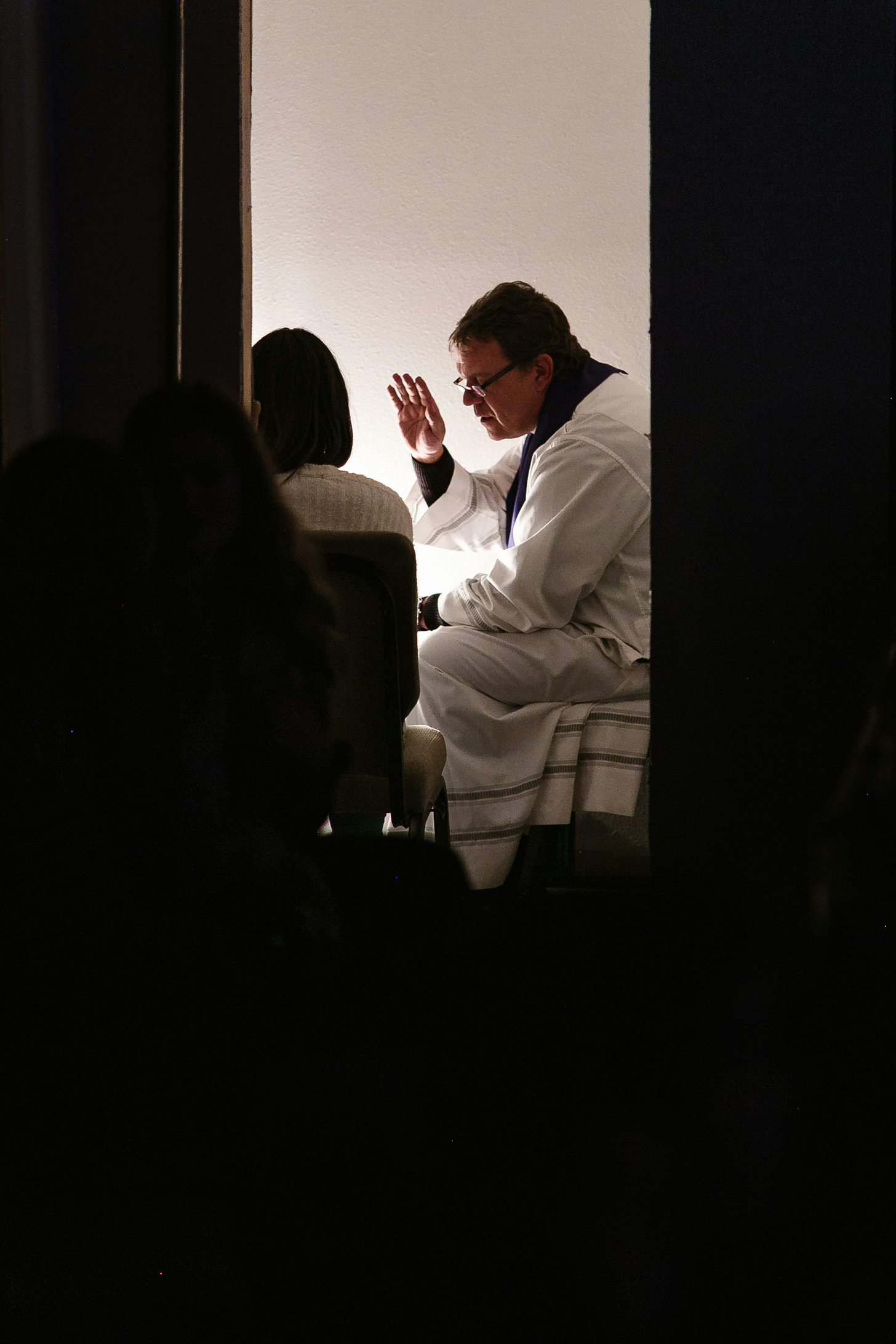Before and After

My homily for the Third Sunday of Easter. Readings for the day are:
Acts 3:13-15, 17-19
Psalm 4:2, 4, 7-8, 9
1 John 2:1-5
Luke 24:35-48
During the Easter Season our readings give us a kind of “Before and After” picture of the disciples.
Except, of course, the way the readings are presented in the liturgy we get it as “After and Before.”
In today’s Gospel reading the disciples are holed up, hiding. Certainly in these days after Jesus was crucified, they must be afraid of what might happen to them. And we can imagine too that they must still have some shame about that fear, about how it led them to run away, to leave him alone to his face his death.
Two disciples had even been fleeing Jerusalem altogether, ready to leave it all behind, when the Risen Lord met them on the road to Emmaus. Opened their minds, their hearts, to the truth of the Resurrection, and turned them back.
This year we skip over their story but today we pick it up right at the aftermath, as these two disciples recount to the others their encounter with Jesus Christ risen from the dead.
And lo and behold, even as they are still speaking about it, here’s Jesus Himself standing in their midst.
The Gospel tells us then that the disciples are startled and terrified, and who can blame them under the circumstances. The one they had abandoned to his death is now here to confront them. We can only imagine what might be going through their heads at that moment.
But the Lord greets them not with accusations or condemnation; but he says “Peace be with you.”
Jesus meets them where they are. In the midst of their fears, their shame, as unworthy as they feel they are, Jesus is ready with an offer of forgiveness and peace.
Notice the wording of this Gospel passage – how it doesn’t say anything about Jesus entering the room or even appearing as if out of thin air. It only says that while they were speaking, he stood in their midst. As if he were there all along and they’re just now noticing him.
That’s the “Before.”
The “After” we see in the first reading is of these same disciples, out in the streets preaching to the people – to the very same people who condemned Jesus to death, to those same people they had been hiding from in the Gospel reading.
Now we see Peter preaching Christ’s forgiveness, even for those who handed him over to be crucified. “Repent,” he says, “and be converted, that your sins may be wiped away.”
This is the theme of today’s readings, as John’s first letter summarizes in the second reading: We have an Advocate in Jesus Christ. He is expiation for our sins, and not for our sins only but for those of the whole world.
This is our message and our mission.
Jesus Christ meets us all, each of us, finds us where we are. He stands among us, even when we don’t notice him. Even, like those disciples on the road to Emmaus, when we don’t immediately recognize him.
Even if we hole ourselves up, shut ourselves off from the world, hide in the shame of our sins, even those times when we feel we have betrayed Him unforgivably, he is there with us just waiting for us to see him, to recognize him, to seek his forgiveness, to accept his gracious mercy.
And to spread it to the world.
Jesus reminds us at the end of the Gospel reading, that repentance, for the forgiveness of sins, would be preached in his name to all nations. He gave that mission to his disciples and by extension to His Church. To all of us.
Last week we celebrated Divine Mercy Sunday, the reminder of God’s great mercy to each of us. This week He reminds us not to keep it to ourselves.
I think we can all agree that our world is a pretty messed-up place. There is a lot of need out there for God’s Peace and Mercy. Jesus reminds us that it starts with each of us.
We are called to be that which we wish to see in the world.

